Think Kegels are the only way to build pelvic floor strength? Think again. These 10 exercises train your core, glutes, and breath to support your pelvic floor in real life so you can move with confidence.
Think Kegels are the only way to build pelvic floor strength? Think again. These 10 exercises train your core, glutes, and breath to support your pelvic floor in real life so you can move with confidence.

Let’s be honest.
If you’ve been told to “just do your Kegels” to fix leaking, low back pain, or postpartum issues… you’re not alone. And if you’re sitting there squeezing your pelvic floor while reading this—hoping it’ll magically rebuild your core—you’re also not alone. But the truth is: your pelvic floor needs way more than Kegels. You need full-body activation. Movement. Breath. Strength.
And today, we’re going to talk about what actually works when it comes to building a strong, functional pelvic floor that supports you in real life—not just while you’re sitting still. So if you’re ready to ditch the guesswork and finally understand what your pelvic floor really needs? You’re in the right place.
This post includes affiliate links. I do earn a commission for products purchased using these links (at no additional cost to you). Thank you for supporting PILATESBODY by Kayla, making the content you see on this blog possible.
Kegels are a starting point—not a cure-all. They’re designed to isolate and strengthen the pelvic floor muscles by squeezing and lifting. That’s great for learning how to connect to your pelvic floor.
But the problem? Your body doesn’t function in isolation. You’re not leaking on a table. You’re leaking when you’re running, lifting, laughing, sneezing, jumping… living. And those real-life moments require your core, glutes, inner thighs, and breath to work with your pelvic floor—not separate from it.
So while Kegels can help build awareness, they’re only one piece of a much bigger puzzle. For a helpful breakdown of how to do them correctly, check out this detailed pelvic floor muscle training guide from MedlinePlus.

Between 2014 and 2015, a study published in the American Journal of Obstetrics and Gynecology evaluated 100 pelvic floor rehab patients using EMG sensors to measure muscle activation.
Each participant performed a standard Kegel contraction, followed by 10 separate movements known to naturally activate the pelvic floor—all while sensors measured activity in the pelvic floor, glutes, lower abs, and inner thighs.
The results were clear: every single one of those full-body movements produced higher pelvic floor activation than a Kegel alone.
This confirms what many of us in the women’s fitness and rehab space have known for years: the pelvic floor doesn’t function in isolation. It responds best when trained alongside the glutes, core, and breath—just like we do in real life.
So if it’s not just about the pelvic floor… what is it about?
Here’s where the magic happens:
To strengthen and support your pelvic floor long-term, you need to address the entire deep core system—that means:
When these muscles are trained to fire together, they create stability, strength, and support from the inside out.
That’s why in my 10 Day Beginner Core Ab Challenge, we focus on activating these muscle groups together—using breath-based movement to strengthen from the core outward.
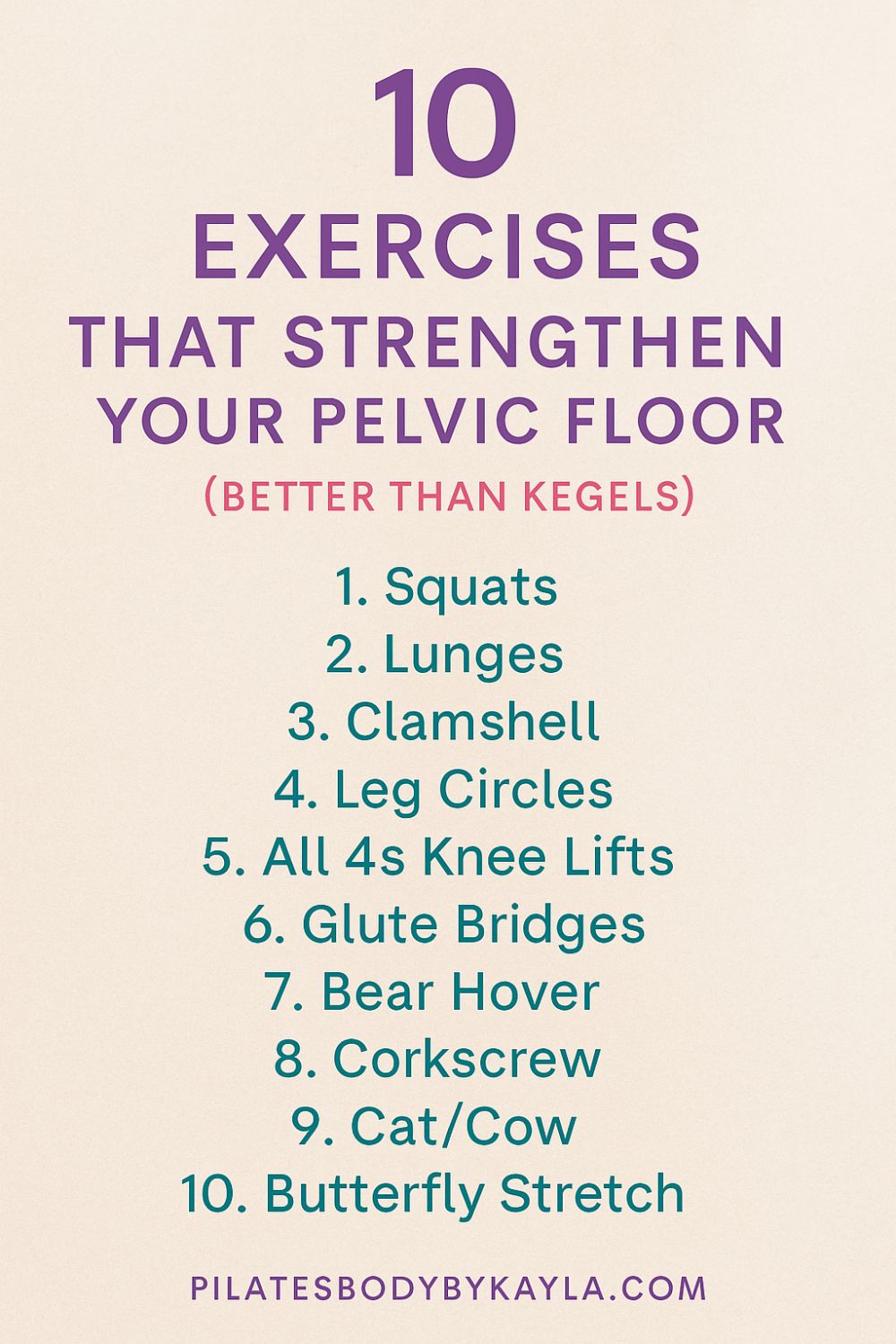
If you’ve ever done Pilates or been to pelvic floor therapy, you’ve probably heard this cue:
“Exhale on exertion.”
That’s because your breath and pelvic floor are deeply connected. When you inhale, your pelvic floor naturally lengthens. When you exhale, it lifts and contracts—especially when paired with effort (like lifting, pushing, or pulling). Breath alone won’t fix dysfunction—but when paired with good posture and smart movement, it becomes the driver of deep core engagement. So if you’re skipping over breathing or rushing through exercises without alignment? You’re missing the magic.
Follow along with Pilatesbody by Kayla YouTube, led by Certified Pilates Instructor, Kayla Brugger of PILATESBODY by Kayla.
Fitness Level: Beginner
Overview:
Targets: Quads, Glutes
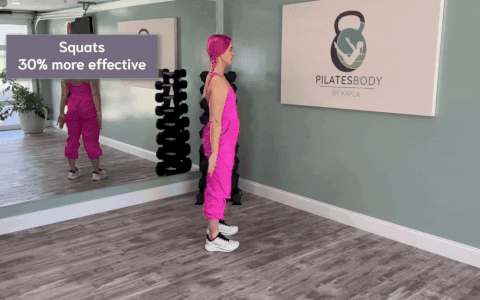
* For a live demonstration of the Squats, click here!
Targets: Quads, Glutes, Core
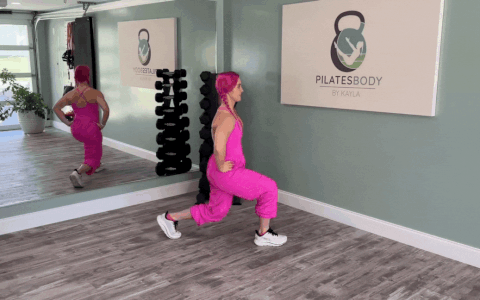
* For a live demonstration of the Lunges, click here!
Targets: Glutes, Obliques
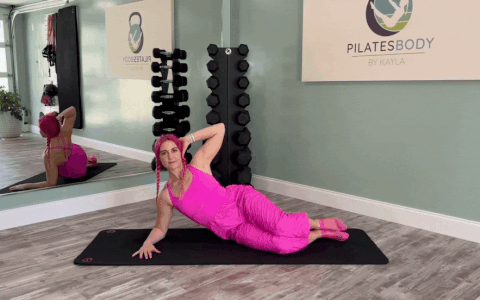
* For a live demonstration of the Clamshell, click here!
Targets: Glutes, Core Stabilizers

* For a live demonstration of the Side-Lying Leg Circles, click here!
Targets: Glutes, Core, Pelvic Floor

* For a live demonstration of the All Fours Bent Knee Lift, click here!
Targets: Glutes, Hamstrings, Pelvic Floor
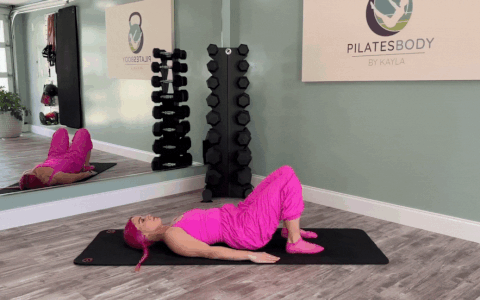
* For a live demonstration of the Bridges, click here!
Targets: Core, Deep Core Stabilizers
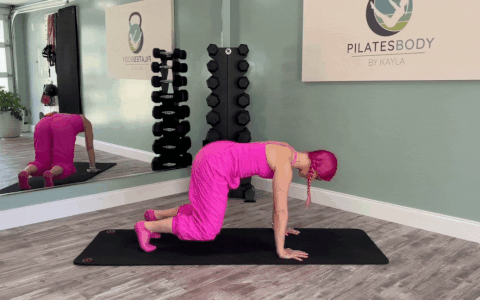
* For a live demonstration of the Bear Hover, click here!
Targets: Obliques, Transverse Abdominis
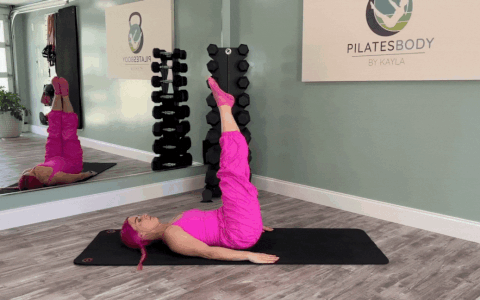
* For a live demonstration of the Corkscrew, click here!
Targets: Spinal Mobility, Pelvic Mobility
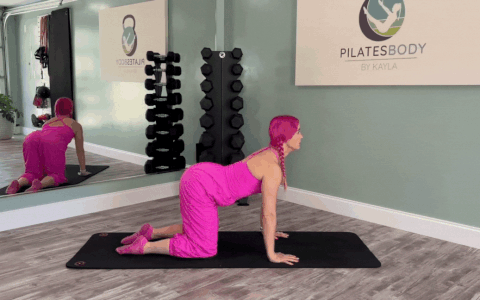
* For a live demonstration of the Cat/Cow, click here!
Targets: Hips, Inner Thighs, Pelvic Floor
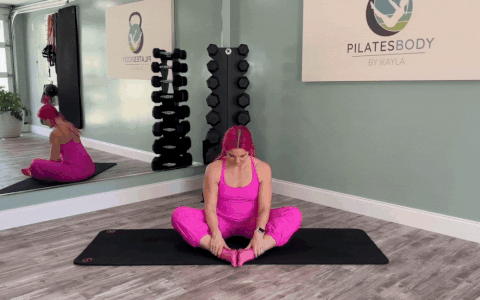
* For a live demonstration of the Butterfly Stretch, click here!
Yes—but they’re only the beginning. Kegels help build awareness and reconnect to your pelvic floor, especially postpartum. But to truly strengthen and restore function, you need to train the muscles that support it: glutes, deep core, adductors, and more. Everything is connected—period.
You should feel a gentle “lift” internally—not just a squeeze. You shouldn’t feel your glutes clenching or your breath holding. If you feel pain or discomfort I always recommend seeking a pelvic floor PT for further guidance and support.
Yes. Especially if your pelvic floor is already tight or overactive. Over-Kegeling can lead to tension, pain, or even worsen symptoms. That’s why we use movement, breath, and strength-based exercises to balance things out.
Yes, absolutely. Many of these movements are common in prenatal and postnatal training. But the key is body awareness. Listen to your body, modify as needed, and stop if anything feels off. If you’re newly postpartum or pregnant, work with a coach or therapist who can guide you through proper form and progression.
It starts with proper muscle activation and alignment. If you don’t build that foundation early on, your pelvic floor won’t know how to engage properly once your workouts get more intense. As you progress to lifting weights, running, or high-impact training, that muscle memory will help prevent issues like leaking, low back pain, or pelvic pressure down the line.
If you’ve felt confused or even ashamed about pelvic floor symptoms—please know this: you’re not broken.
You’re just missing the full picture.
The good news? You can rebuild strength, restore control, and finally feel confident in your body again—without obsessing over Kegels.
Start small. Focus on breath. Integrate movement. And when you’re ready, level up with a plan that builds strength where you actually need it most.
For a free beginner-friendly workout calendar, join my Beginner 10 Day Core Ab Challenge. Your core (and pelvic floor) will thank you.
Your Friend & Pilates Expert,
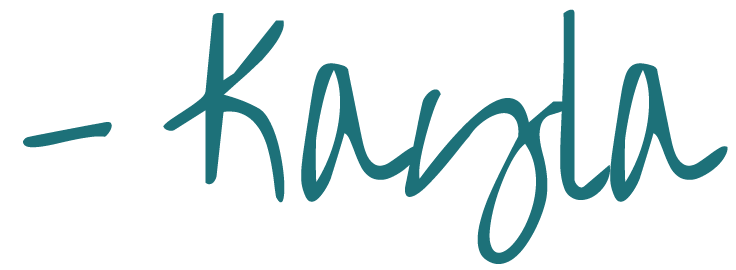
Kayla Brugger
Founder of PILATESBODY by Kayla
Founder of PILATESBODY On-Demand
Download your PDF Workout Calendar and easily access the Daily Workouts inside the Online Course Guide with Progress Tracker.
Download your PDF Workout Calendar and easily access the Daily Workouts inside the Online Course Guide with Progress Tracker.

Hi, I'm Kayla Brugger. Certified Pilates Instructor & Minnesota Mama of 2.
